Sturgeon caviar is a luxury food product known for its rich flavor and unique texture. It’s harvested from the roe of sturgeon, a species of fish that has been around since the time of the dinosaurs. This delicacy has a long history of being prized by gourmands and has often been associated with opulence and celebration. Not all fish roe can be classified as caviar; only roe from sturgeon bears this exclusive title.
Understanding the value and quality of sturgeon caviar comes down to its rarity and the complex process behind its production. The sturgeon is a slow-growing fish that can live to be over 100 years old, and caviar production requires precise timing for egg harvesting. The most renowned varieties of sturgeon caviar include Beluga, Osetra, and Sevruga, each with its distinctive characteristics in size, color, and flavor nuances.
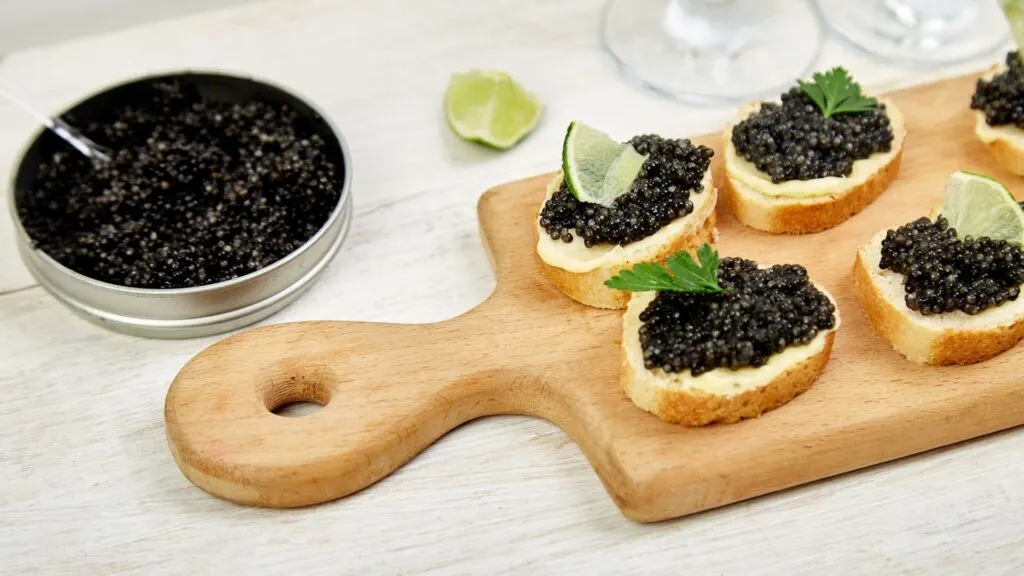
When enjoying sturgeon caviar, the emphasis is on savoring the delicate burst of flavor with minimal accompaniments. Properly appreciating this delicacy involves understanding the different types and grades, as well as the best practices for serving and storage to maintain the integrity of the caviar’s quality. With an appreciation for the tradition and craftsmanship that goes into each tin of sturgeon caviar, you can indulge in one of the world’s most revered gastronomic delights.
Understanding Caviar
Caviar is renowned for its unique texture and rich flavor, often associated with luxury and gourmet cuisine. This delicacy comes from sturgeon roe, highly prized for its culinary qualities.
Types of Caviar
Caviar is classified based on the sturgeon species from which the roe is harvested:
- Beluga Caviar: Extracted from the Beluga sturgeon, this is the rarest and considered the most luxurious type, noted for its large, soft eggs.
- Ossetra Caviar: Coming from the Ossetra sturgeon, these eggs are medium-sized with a nutty flavor, varying in color from golden to dark brown.
- Sevruga Caviar: Harvested from the Sevruga sturgeon, Sevruga caviar has smaller, firmer grains and a strong flavor.
- Kaluga Caviar: Often referred to as “River Beluga,” it is similar to Beluga caviar in size and taste but harvested from the Kaluga sturgeon.
Grades and Quality
Evaluating caviar requires attention to four key characteristics:
- Grades: Caviar is graded by size, texture, and color. Grade 1 caviar features large, intact grains with a fine texture. Grade 2 may have smaller or less uniformly shaped grains.
- Texture: The roe should have a distinct, firm texture that delicately bursts with flavor upon consumption.
- Flavor: Freshness is paramount. High-quality caviar should taste neither overly fishy nor salty, with subtle differences between types.
- Appearance: Top-grade caviar has a glossy appearance and should be uniform in color. Each egg is visually inspected to ensure the highest standard of quality.
When purchasing caviar, make sure it has been handled and stored properly to maintain its ultimate freshness and flavor.
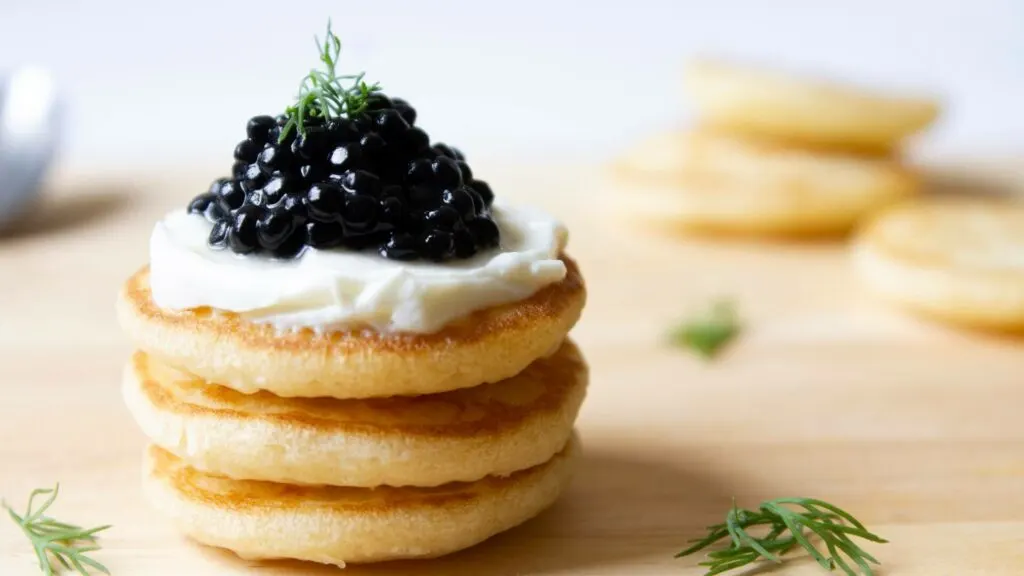
Sturgeon Species
Your understanding of sturgeon caviar begins with recognizing the diverse species that provide this luxurious product. Appreciating their biological variations aids in identifying the types of caviar available in the market.
Sturgeon Family and Species
The sturgeon family, Acipenseridae, includes several species notable for their contribution to the caviar industry. You may encounter the following when exploring caviar selections:
- Beluga Sturgeon (Huso huso): Known for producing the largest eggs, making its caviar highly prized.
- Siberian Sturgeon (Acipenser baerii): Offers a medium-grain roe that is popular for its rich flavor.
- White Sturgeon (Acipenser transmontanus): A North American native providing fine-grained roe.
- Sterlet (Acipenser ruthenus): Smaller species favored for its golden caviar.
- Albino Sturgeon: A rare variety, known for its unique, pale roe.
Roe Harvesting
Roe, the unfertilized eggs of sturgeon, is meticulously harvested to produce caviar. The methods of roe collection and processing can affect the quality and sustainability of the caviar you purchase:
- Wild-caught: Historically, most caviar was harvested from wild sturgeon, leading to some species’ decline due to overfishing.
- Farm-raised: In response to declining wild populations, there has been a shift toward sustainable, farm-raised sturgeon, which supports conservation efforts and provides a steady caviar supply.
Understanding these details enhances your ability to make informed decisions when selecting caviar.
Caviar Production
Caviar, the luxurious delicacy of sturgeon fish roe, undergoes a meticulous process to ensure the highest quality from harvest to packaging. Your understanding of caviar production is essential in recognizing the value of this gourmet product.
From Harvest to Packaging
When your caviar is harvested, the focus is on retaining its delicate texture and flavor. Farmed sturgeons are typically the source due to conservation efforts for wild populations. The eggs are carefully extracted and sieved to separate them from the fish’s fatty tissues and membranes. Next, the pasteurized or unpasteurized roe is swiftly washed to prevent unwanted flavors.
- Pasteurized caviar: Heat-treated to extend shelf-life but may alter flavor and texture.
- Unpasteurized caviar, also known as ‘fresh’ or ‘malossol’: Kept cool and has a shorter shelf life, but preserves the original taste and quality.
The crucial factor in the packaging phase is storage. Your caviar should be kept at a consistent temperature, generally just above freezing, to maintain its freshness until it reaches your table. Premium caviar is often vacuum-sealed in small tins or glass jars and should be consumed shortly after opening to enjoy its full, rich flavor.
Farming Practices
In the realm of aquaculture, sturgeon farming has developed sophisticated methods to produce caviar, striving for sustainability and quality. Your caviar is likely the result of years of careful breeding and maintaining optimal conditions for the sturgeons in terms of water quality, diet, and environment.
The farming of sturgeon allows for more controlled conditions, reducing the impact on wild stocks and often leading to more consistent caviar quality. Here’s a brief overview of common practices:
- Water conditions: Clean, well-oxygenated water matching the sturgeon’s natural habitat.
- Dietary management: Nutritionally balanced feed to ensure healthy growth and roe development.
- Health monitoring: Regular checks to prevent disease and ensure the well-being of the sturgeon.
Caviar Characteristics
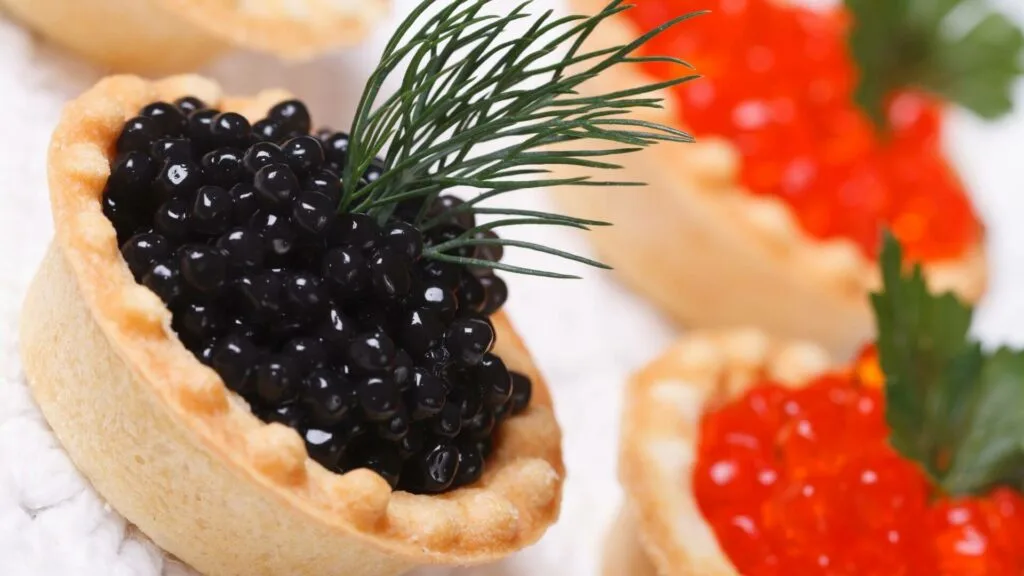
Exploring the unique taste profile and appearance of caviar and understanding these characteristics is essential in appreciating its allure.
Taste Profile
Your experience of caviar’s taste profile is famously complex, with flavors ranging widely depending on the type. Buttery undertones are a hallmark of high-quality caviar, occasionally accompanied by a nutty richness. Umami is another dimension of caviar’s taste, delivering depth and savoriness. The balance of salty and briny notes provides a distinctive flavor that is cherished globally.
Appearance and Texture
The appearance of your caviar should be striking. Caviar of the highest grade is often shiny, indicating freshness and quality. It’s common for the eggs to be plump and firm to the touch, a testament to their texture and quality. When you evaluate caviar, consider its texture; the eggs ought to separate easily when pressed, yet they should not be overly soft.
Purchasing Caviar
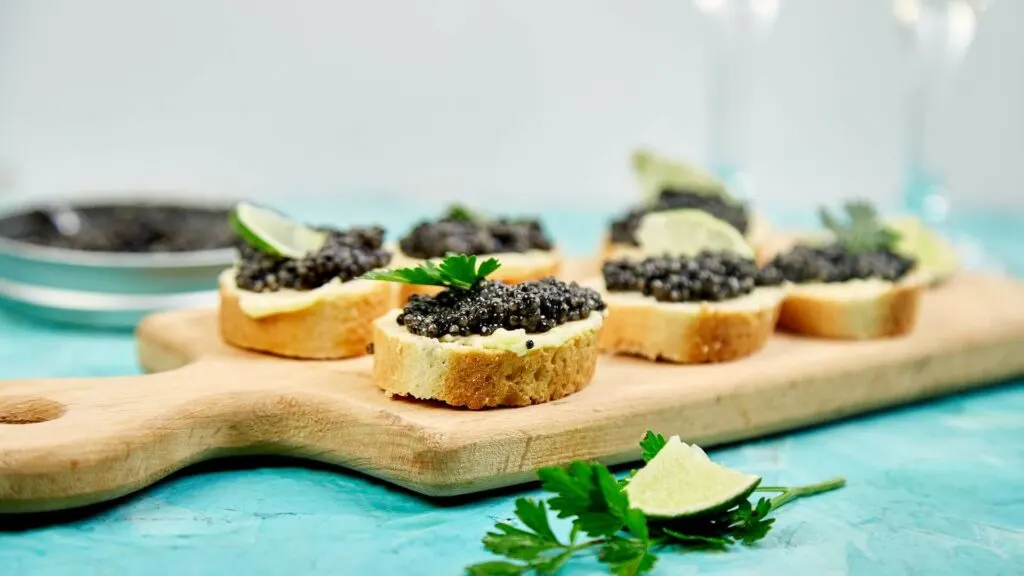
When seeking to purchase caviar, you’ll encounter a variety of choices regarding its cost, quality, and origin. Your decision will likely hinge on these critical determining factors.
Deciding Factors
- Cost & Price Point: Caviar is known for its luxury status and correspondingly carries a premium price tag. Prices can range widely based on caviar type and quality. Budget accordingly for this high-end delicacy.
- Region: The origin of the caviar is paramount as it not only influences the flavor profile but also the price. Historically, Russia and Iran have been lauded for their superior sturgeon caviar. However, North America and regions like Paris have become recognized among caviar connoisseurs for quality production, particularly American caviar, which is often more accessible and sustainable.
- Luxury Level: The highest grade of sturgeon caviar often comes from the Caspian Sea, with Iranian and Russian varieties highly sought after for their exquisite taste and texture.
Sturgeon Caviar: A Guide to the Luxury Delicacy
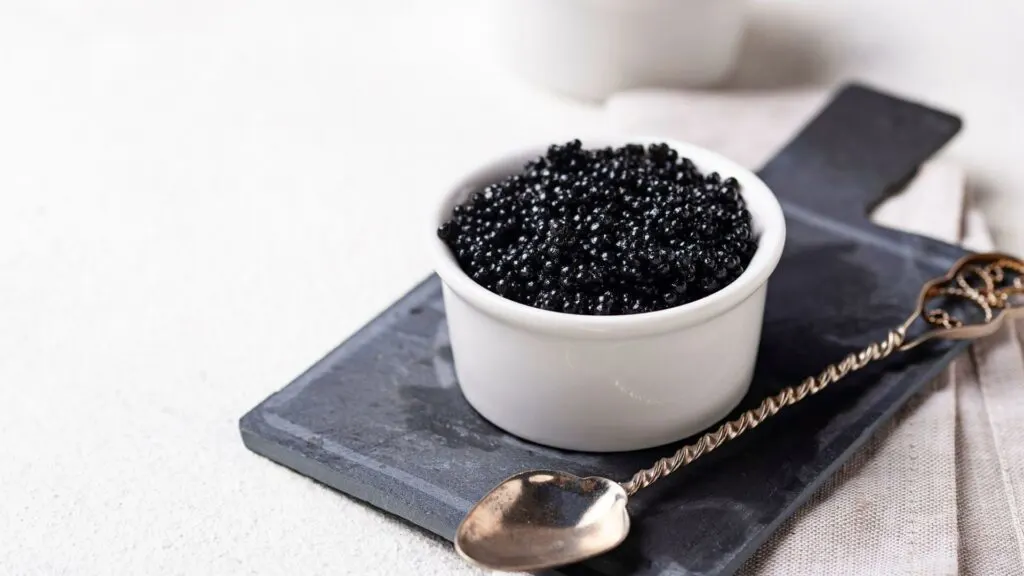
When selecting sturgeon caviar, you’re not just choosing a high-end product but also an experience steeped in culinary tradition and sustainability considerations. Sturgeon caviar is prized for its rich buttery flavor, often reflecting a meticulous and time-intensive production process. Because sturgeon are slow to mature and spawn infrequently, their roe is inherently scarce, thereby commanding a premium price.
To ensure you’re purchasing genuine sturgeon caviar, check for the CITES code, which confirms the species and its legal compliance. Sounds such as a click upon opening a tin indicate a proper seal, suggesting quality and care in packaging. As sturgeon caviar is not a freezable food, consider your consumption needs to avoid unnecessary waste.
Expect to invest between $50 to $75 per ounce for widely available caviar, with variations based on rarity and quality. As you savor your selection, remember, caviar pairs well with simple accompaniments, allowing its nuanced flavors to shine.
By choosing sustainable products, you’re supporting the conservation of sturgeon species and ethical caviar production. Embrace the subtleties and relish your caviar experience with the confidence that you are partaking in a delicacy that balances opulence with responsibility.

Jessi is the creative mind behind The Coffee Mom, a popular blog that combines parenting advice, travel tips, and a love for all things Disney. As a trusted Disney influencer and passionate storyteller, Jessi’s authentic insights and relatable content resonate with readers worldwide.
